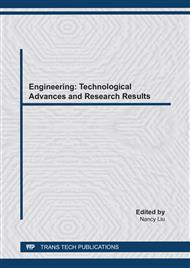p.11
p.19
p.27
p.37
p.47
p.55
p.63
p.71
p.83
Microclimate Design Review (Study Case: TOD Area at Gedebage, Bandung)
Abstract:
Design review is a stage that undertaken to improve the quality of a design in buildings, cities and landscapes. The design review stage can be used to minimize the impact that will occur. Inappropriate design in the planning of the central city of Bandung in Gedebage could have caused the phenomenon of Urban Heat Island (UHI) in the region. The occurrence of this phenomenon can cause the lack of thermal comfort in the area. The potential of Urban Heat Island (UHI) in the planned area can be detected early by conducting design review towards RTBL document of Gedebage Technopolis, Bandung. This study aims to assess the 2014 RTBL of Gedebage with simulation using the ENVI-Met 4.3.1 tool. Design review was carried out with a climate sensitive urban design (CSUD) approach so that the design of The Integrated Terminal area of Gedebage Technopolis can have thermal comfort accords with standard. In this study, it was found that the design of The Integrated Terminal area of Gedebage Technopolis includes in the comfortable category and it has an average Predict Mean Vote (PMV) value of 1.6 for 24 hours. In addition to evaluate the design, it was found that by adding the principle of climate sensitive urban design, a design can be improved and improved its quality of the microclimate. The initial recommendation that given is reducing building height, increasing open space, and replacing material in the pedestrian area.
Info:
Periodical:
Pages:
63-69
Citation:
Online since:
August 2020
Keywords:
Price:
Сopyright:
© 2020 Trans Tech Publications Ltd. All Rights Reserved
Share:
Citation:


